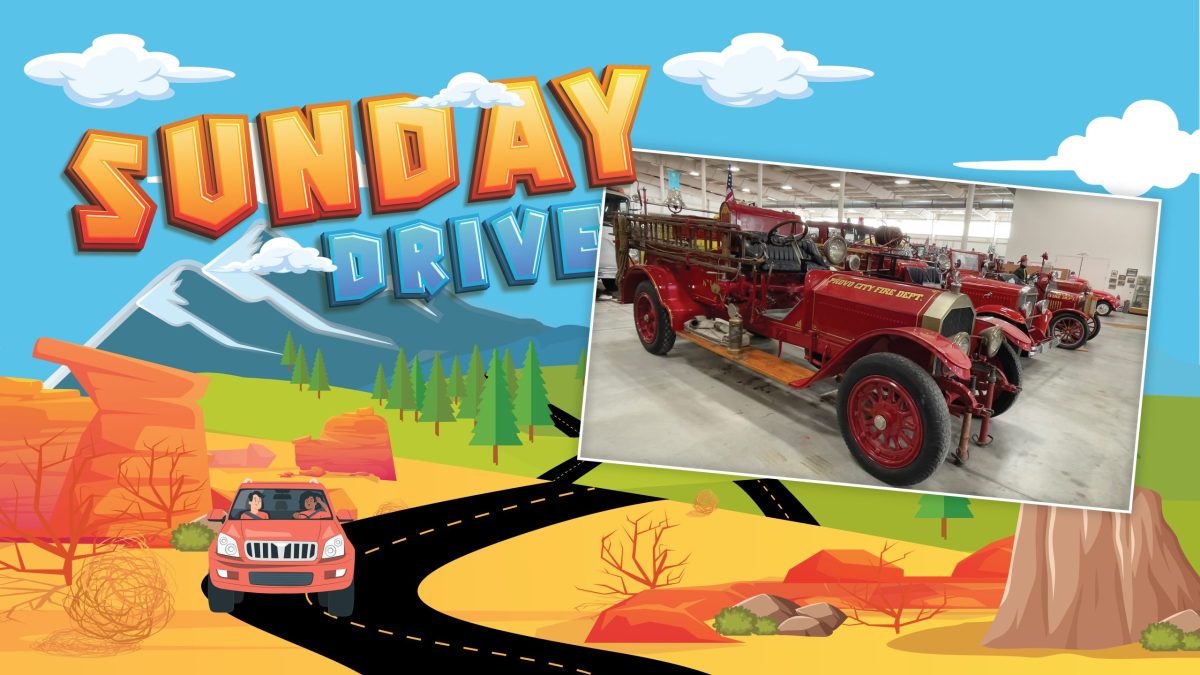As a young boy, fire trucks held quite a fascination for me. I marveled at the big red engines on school trips to the station. As an energetic fledgling news photographer, I slept with a scanner to chase the red lights to middle-of-the-night conflagrations.
Wandering through the Utah Fire Museum near Grantsville in the desert west of Salt Lake City took me back in time. My imagination ran wild walking through the dozens of old fire trucks chronicling the history of firefighting in Utah. Each bright red vehicle told endless stories of its work protecting our citizenry, with brave firemen hauling hoses and erecting ladders to fight raging fires.
Before I made my way back to the fire trucks, the wall display of over a hundred helmets. The yellow and white, black and blue collection painted a rainbow of storylines from the past as they hung silently on the wall.
Today, we all carry mobile devices that allow us to reach out instantly to 911. Back in the 19th century, it wasn’t quite so easy. A display of fire call boxes dating back to 1883 illustrated how Salt Lake City was mapped with specially numbered alert boxes around the city — a system that remained in place until 1985!
As a radio nut, I loved seeing old Bearcat and Radio Shack scanners and other two-way radio gear.
When modern firefighters pull up to a scene, we take it for granted as they haul out hundreds of feet of fire hose. An exhibit traces the history of fire hoses back to Holland in 1673 and modern advances by American firemen in the early 1800s.
But amidst the vast collection of hoses, ladders and nozzles, the fire apparatus took center stage. There they were, all neatly aligned in rows — about three dozen trucks and engines, all looking like they were ready to spring into action.
I remembered the 1952 Van Pelt and 1953 International pumpers from my youth, right next to a sleek 1952 American LaFrance with the flat nose. Stepping further back in time, I could only imagine the futuristic feel of the 1922 Ford American LaFrance engine back in its day a century ago.
There was even a 1927 REO Speed Wagon from Juab County. The trucks, manufactured from 1915 until 1952, were named for company owner Ransom Eli Olds. For me, it was the namesake of one of my favorite rock bands from the 1960s and ’70s.
From the bucket brigades of the 17th century to hand pumpers of the 1700s to modern-day engines, fighting fires has always been about getting water to the fire. That task was aided by advancement in portable ladders in the 19th century to help get firefighters to locations out of their reach.
Amidst the eye-catching big pumpers and ladder trucks, another small vehicle stood out. The tiny red Volkswagen Bug with a big red gumball light on its roof must have been a treasure for the Tooele Fire Department.
Most of all, the displays brought me back to my time as a news photographer in the 1970s. I would love to be among the first on the scene, shadowing the professional firefighters in Madison, Wisconsin. My godfather, Chief Wilcox, was a longtime leader in the department, and he loved having me come by the station with photographs for his firefighters.
But I think what I most took away from my visit was the gratitude each of us owes to the firefighting community. Yeah, it must be really cool to ride to a fire in one of those sleek red engines. But there’s also the fear of the unknown and the pride of knowing that they’re helping keep us safe.
DETAILS
Getting There: Head west on I-80 towards Wendover, getting off at exit 99 and heading south on S.R. 36 between Tooele and Grantsville. The Utah Fire Museum is in the Deseret Peak Complex, south of the Utah Motorsports Campus.
Hours: Friday and Saturday from 11 a.m.-3 p.m.
Fee: Help the museum by dropping a few bucks into the donation bucket at the entrance.
Displays: There are myriad displays, from helmets to hoses, fire trucks to photos. Do take time to go through some of the informational binders around the museum to learn more about the history of firefighting.
What’s There?: Huge building housing dozens of historic fire trucks and engines plus a wide collection of firefighting apparatus in a large 30,000-square-foot museum.
Kids: This is a perfect outing for kids!

